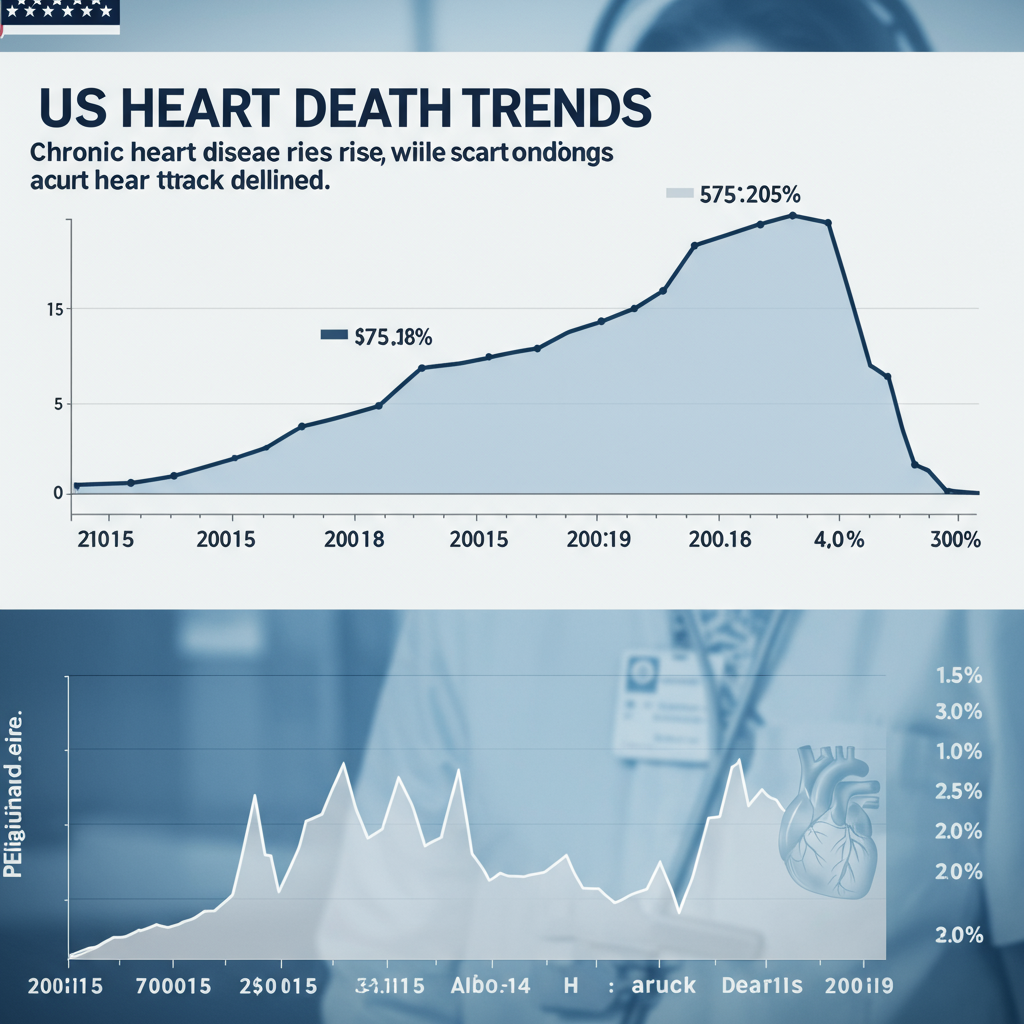Heart disease remains the number one killer in the United States, but the way it claims lives is changing dramatically. While the fear of sudden heart attacks has long dominated public perception, a significant shift has occurred over the past five decades. Deaths specifically attributed to acute heart attacks have plummeted, marking a triumph in medical care and public health. However, fatalities from other, often chronic, heart conditions are surging, presenting a new and growing challenge for cardiovascular health.
According to a study analyzing US Centers for Disease Control and Prevention (CDC) data from 1970 to 2022, there has been incredible progress in reducing mortality from acute cardiac events. Deaths from heart attacks specifically have fallen by nearly 90 percent. This dramatic decline is a testament to advancements in treatment, including interventions like heart stents and coronary artery bypass surgery, and the widespread use of cholesterol-lowering medications. Public health efforts, such as campaigns to reduce smoking rates and increased bystander CPR training, have also played a crucial role in saving lives.
The overall percentage of US deaths attributed to heart disease has decreased from 41 percent in 1970 to 24 percent in 2022. This is largely driven by the success against heart attacks and other ischemic heart diseases, which historically accounted for the vast majority of heart-related fatalities. In 1970, ischemic heart disease was linked to around 91 percent of heart disease deaths; by 2022, this figure had dropped to about 53 percent, according to the research.
The Rise of Chronic Heart Conditions
Despite this success, heart disease continues to be the leading cause of death due to a concerning counter-trend: a substantial increase in deaths from other types of heart disease, primarily chronic conditions that develop over time. These conditions often affect individuals who survive acute events and live longer.
Fatalities from these chronic heart conditions have risen significantly since 1970. Specifically:
Heart Failure: Deaths have increased by 146 percent. This occurs when the heart can’t pump blood effectively. It’s becoming increasingly common, especially among older adults, and can be a consequence of surviving a previous heart attack or living with high blood pressure. Symptoms include shortness of breath, fatigue, and swelling.
Arrhythmias: Deaths linked to irregular heartbeats have risen by 106 percent. While some arrhythmias are benign, others can be life-threatening, potentially leading to fainting, dizziness, or sudden cardiac arrest.
- Hypertensive Heart Disease: Deaths caused by long-term high blood pressure have seen a dramatic 450 percent surge. High blood pressure forces the heart to work harder, leading to muscle thickening or hardening and potential failure. Often called the “silent killer,” it frequently has no symptoms until serious damage occurs.
- www.newscientist.com
- m.economictimes.com
- www.newsweek.com
- www.onlymyhealth.com
- newsroom.heart.org
These three conditions, among others, now account for a near-equal share (around 47 percent in 2022) of heart disease deaths compared to ischemic causes, marking a profound shift in the mortality landscape.
Why the Shift? Longer Lives and Mounting Risk Factors
Experts suggest the rise in chronic heart conditions is a complex issue with several contributing factors. A primary reason is increased longevity. As people survive heart attacks and other acute events thanks to improved treatments, they are living longer. These extended lifespans provide more time for chronic, often age-related, cardiac issues to develop and progress.
Furthermore, the ongoing burden of heart disease is fueled by alarming increases in key health risk factors across the US population. High blood pressure, obesity, and diabetes are rampant and continue to rise. Nearly half of US adults have high blood pressure, over 70 percent are overweight or obese (with over 40 percent classified as obese), and more than half have type 2 diabetes or prediabetes.
These interconnected conditions, often referred to as Cardiovascular-Kidney-Metabolic (CKM) syndrome, put immense strain on the heart over time, significantly increasing the risk of developing chronic heart failure, arrhythmias, and hypertensive heart disease. Experts warn that projections show these risk factors will continue to worsen, pointing to obesity as a major driver of preventable deaths, sometimes even being called “the new smoking” due to its profound impact on lifespan and health. While smoking rates have thankfully declined, the prevalence of excess weight and metabolic conditions continues to climb.
The Next Frontier in Heart Health
While acknowledging potential nuances in death classification data, the overall trend is clear: the focus in the fight against heart disease must broaden. The incredible success against acute heart attacks highlights what is possible with focused medical innovation and public health efforts. However, the rising tide of chronic heart conditions underscores the urgent need for a greater emphasis on prevention, management, and healthy aging.
Future efforts in cardiology and public health must concentrate on addressing the underlying risk factors – high blood pressure, obesity, diabetes – and developing better strategies for managing chronic conditions like heart failure and arrhythmias. Ensuring equitable access to care and prevention resources across all populations will also be critical to tackling persistent health disparities. Finding ways to help people not just live longer, but also age healthily with stronger hearts, represents the vital next frontier in cardiovascular health.




